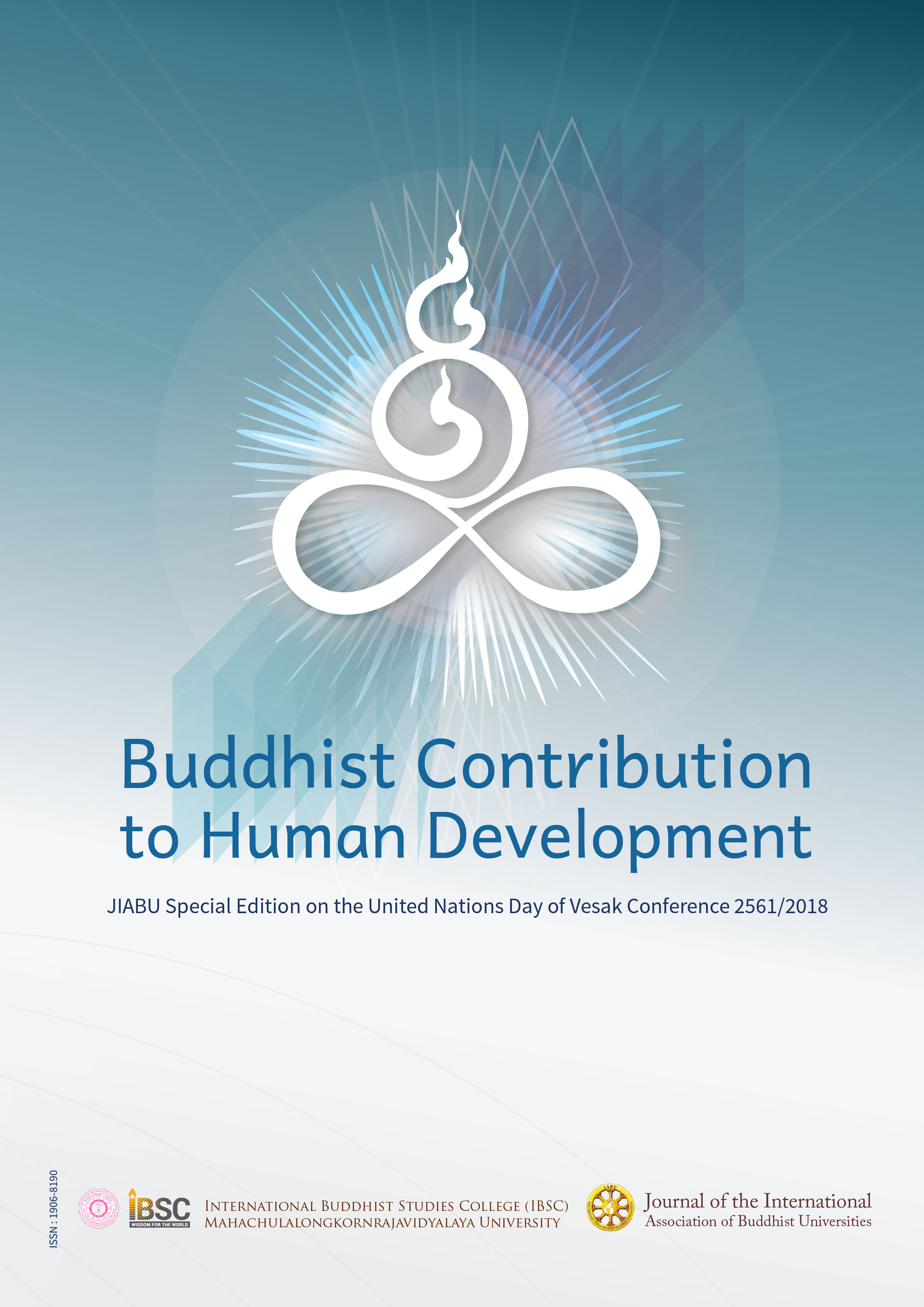Engaged Buddhism for Social Welfare
Main Article Content
Abstract
Buddhism has been playing a significant role in the modern world and in the rise of
“engaged Buddhism” in particular. For many years, the spread of Buddadharma took place
primarily in Asia, but more recently, Buddhism has begun to take root in the west. Like
myself, many western Buddhists came to the dharma with strong backgrounds in political
action, arts, health, psychology, or education, which are related to engaged Buddhism. My
teacher Trungpa Rinpoche, encouraged his students to apply their dharmic view and training
to the smallest details of their daily lives. The reputation of Buddhism in the west could be
reconsidered when talking about engaged Buddhism because Buddhists tended to be viewed
as dis-engaged in the past, especially when compared with Christians. Although all Buddhists
are engaged in the world in one way or another, the term Engaged Buddhism emerged in 1978
in association with a group known as The Buddhist Peace Fellowship. Since that time, the
engaged Buddhism movement has continued to grow, and it has become an important stream
of dharma in the west. One of the most prominent voices has been the Zen teacher Bernie
Glassman. Other activists have focused on issues such as environment, racial bias, as well as
in the area of death and dying and prison mindfulness. The biggest and most rapidly growing
development stemming from engaged Buddhism has been the rise of the secular mindfulness
movement.
Article Details
Views and opinions expressed in the articles published by The Journal of the International Association of Buddhist Universities (JIABU), are of responsibility by such authors but not the editors and do not necessarily reflect those of the editors.

